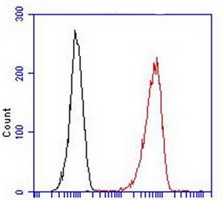Isotype Controls
Isotype controls are used to confirm that the given signal is specific and not a result of non-specific Fc receptor binding or other protein interactions of the primary antibody.
Isotype control antibodies have no relevant specificity for the cells in question but with all the non-specific characteristics of the antibody used in the experiment. Isotype controls are considered one of the possible negative controls for your experiment and are most commonly used in flow cytometry and immunohistochemistry or immunocytochemistry.
An isotype control should be of the same species and isotype, used at the same concentration and conjugated to the same label as the specific primary antibody used in the experiment.
Therefore, OriGene provides a wide range of isotype controls with different conjugates.
How to best select the correct isotype control
After you have used our search bar, you can use our filters to narrow down:
- The correct product type (choose product type "Isotype Controls" as a subcategory of "Antibodies")
- The host you need for your isotype control (same host as your primary antibody)
- The isotype you need (same isotype as your primary antibody)
- The conjugate (or unconjugated) you need (same conjugate as your primary antibody)
Discover OriGene's isotype controls
You can find pre-filtered isotype controls for Mouse/Rat/Hamster primary antibodies here:
Example
One example of the use of an isotype control can bee seen here. The Flow Cytometry signal can be clearly distinguished between the unspecific signal from the isotype control and the specific signal of the LGR5 antibody binding to its target.

Black line: PE-conjugated isotope control.
Red line: anti-Lgr5-PE, Cat.No. TA400001.
» Search Your Isotype Control (browse all)
| 抗体相关资料 |


 United States
United States
 Germany
Germany
 Japan
Japan
 United Kingdom
United Kingdom
 China
China
